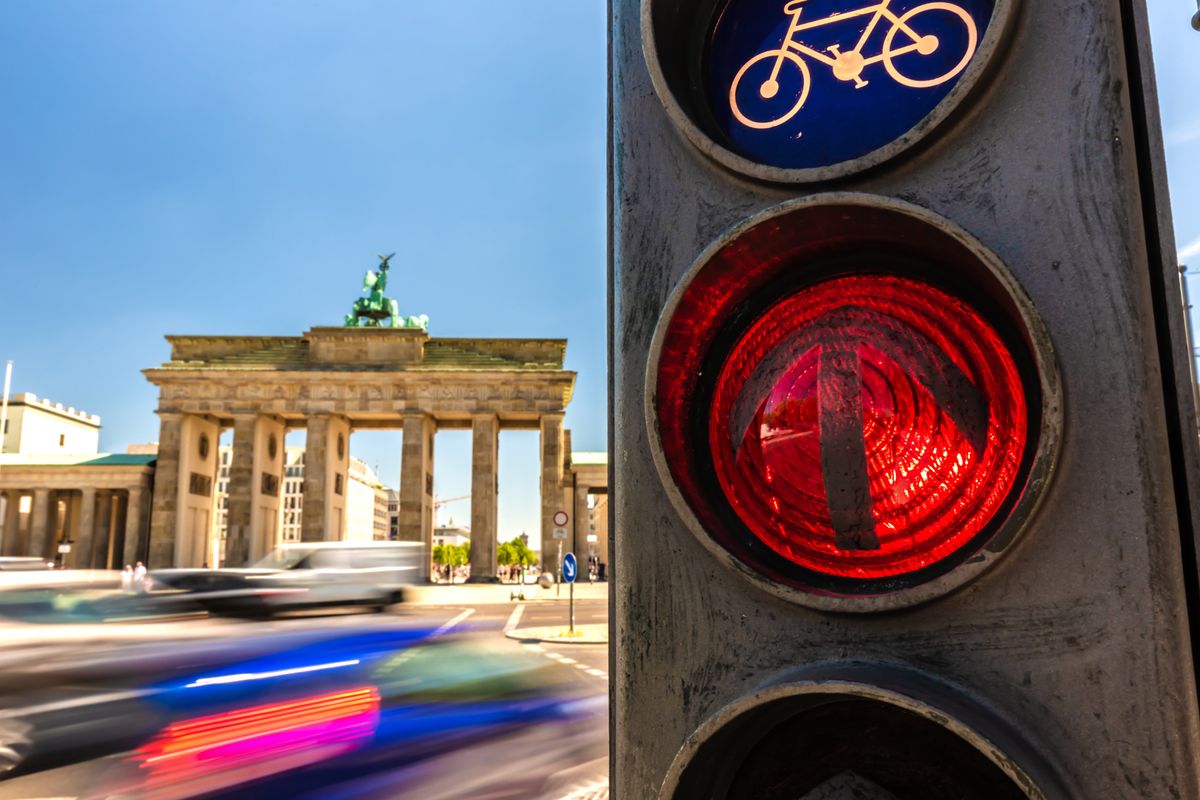This article is part of our exclusive IEEE Journal Watch series in partnership with IEEE Xplore.
With the rise of 5G technology, new ways to keep roads safe are becoming possible. In a recent paper, researchers based in Germany argue the tech could be used to warn drivers about potential collisions, and also help direct traffic more broadly. The researchers are now preparing to demonstrate a prototype of their system, which combines an array of sensors, traffic flow algorithms, and a 5G network, in the city of Aalen sometime next year.
Their approach is based on the speed of 5G technology. A local system could, theoretically, sense the approach of other vehicles, consult a prediction algorithm, and warn drivers about a potentially dangerous situation in time to prevent a collision. The goal is to take advantage of sensors and edge computing and help drivers make more informed decisions in real time.
“The main specification of the new generation of communication [tech] is that they are all ultrareliable and ultralow latency,” explains coauthor Mohammad Reza Mousavi, a postdoctoral researcher at the Aalen University of Applied Sciences, in Germany. “The point is that now, with 5G, we can have some infrastructure that has low latency, and we can actually achieve a reaction time that is less than before.”
The research team, which also includes researchers from institutions including Helmut Schmidt University and Fraunhofer IAO, also in Germany, designed the system to have several components. A central management system is needed to provide edge-computing capabilities, along with an algorithm that can calculate traffic flows and the risk of collisions.
The technology also depends on another system that’s charged with sending warning messages to drivers—or anyone else approaching an intersection. The paper notes that at a dangerous intersection, those warnings could take the form of a lit-up text display, flashing lights, or an acoustic signal; all of those signals would benefit both drivers and pedestrians. The information could also be transmitted to an app on the driver’s phone or the navigation display of a user’s car. But the authors also write that such warnings could actually be disruptive, and say that they plan to study the impact of different warning methods.
Sensors that can track the location of vehicles, pedestrians, and cyclists and can also survive poor weather conditions are required as well. Data would ultimately come from a variety of sources, including optical cameras, radars, and user apps that collect location information, as well as event calendars and weather forecasts.
There are two primary applications of the technology: collision avoidance and traffic management. The system could be used to send a warning to a driver to wait, based on quickly collected data about an upcoming car that’s about to turn, for example, or a bicyclist coming up from behind. When applied to several connected intersections, the system might also be deployed to prioritize certain vehicles with green lights. For instance, the traffic system might prioritize emergency vehicles and buses over single-passenger cars.
Studies into potential smart traffic technology are becoming more common. Recently, other researchers also based in Germany worked on the KI4LSA project, which uses artificial intelligence and edge computing for predictive control of traffic lights. An endeavor at Aston University in Birmingham, England, used AI to train a system that uses real-time camera footage to control traffic lights, thus avoiding delays and jams.
In London, officials have even tested a system that automatically gives pedestrians the right of way, and only switches when sensors detect the presence of a nearby vehicle.
There are challenges with the 5G traffic control system, Mousavi points out. Implementation of any new technology can take time—and the arrival of 6G cellular tech could force engineers to redesign their systems. Another concern is that the public needs to be aware of how the technology works and believe in its purpose.
Still, smart traffic control could help advance climate and safety priorities. In fact, the authors are already looking at how their system might be used to inform pedestrians about potential traffic safety issues, too. After all, while cars are outfitted with a range of equipment that can alert drivers, pedestrians—including children and seniors—aren’t necessarily in the same position.
“We are thinking about how we can alarm these kinds of people that there is, for example, a danger near you,” explains Mousavi. “We’re thinking about a new alarm method to all actors on the street.”
Mousavi argues that this technology could help the world get closer to smart cities, and could pave the way for self-driving cars, too. Eventually, traffic lights might become virtual, making a whole range of decisions on their own by communicating directly with vehicles.
Mousavi and his colleagues presented their paper at the recent 2023 IEEE International Conference on Omni-layer Intelligent Systems.
- The Man Who Invented Intelligent Traffic Control a Century Too Early ›
- Audi Cars Now Talk to Stoplights In Vegas ›
- If Navigation Apps Don’t Alleviate Congestion—Could City-Wide Traffic Software Help? ›
Rebecca Heilweil is a journalist focusing on emerging technology and technology policy. She has written for Wired, the Wall Street Journal, and Slate, among other outlets.
To find her elsewhere: https://twitter.com/rebheilweil



